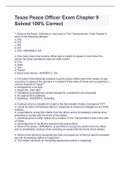Resume
Samenvatting Comparative analysis of political institutions
- Cours
- Établissement
- Book
Samenvatting voor het vak Comparative analysis of political institutions, met college-aantekeningen en een samenvatting van het boek Comparative Politics
[Montrer plus]













